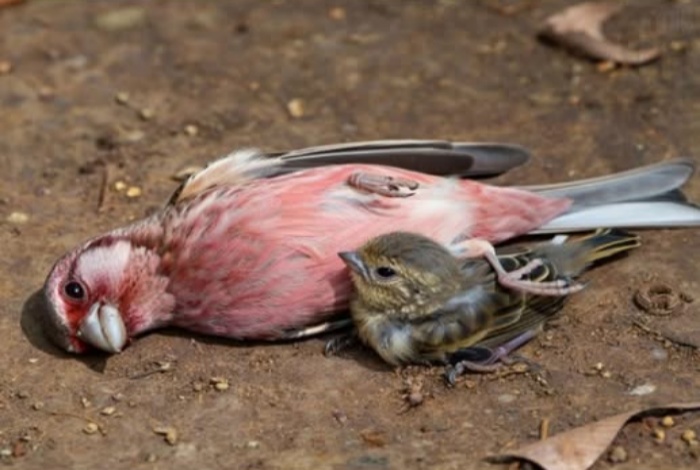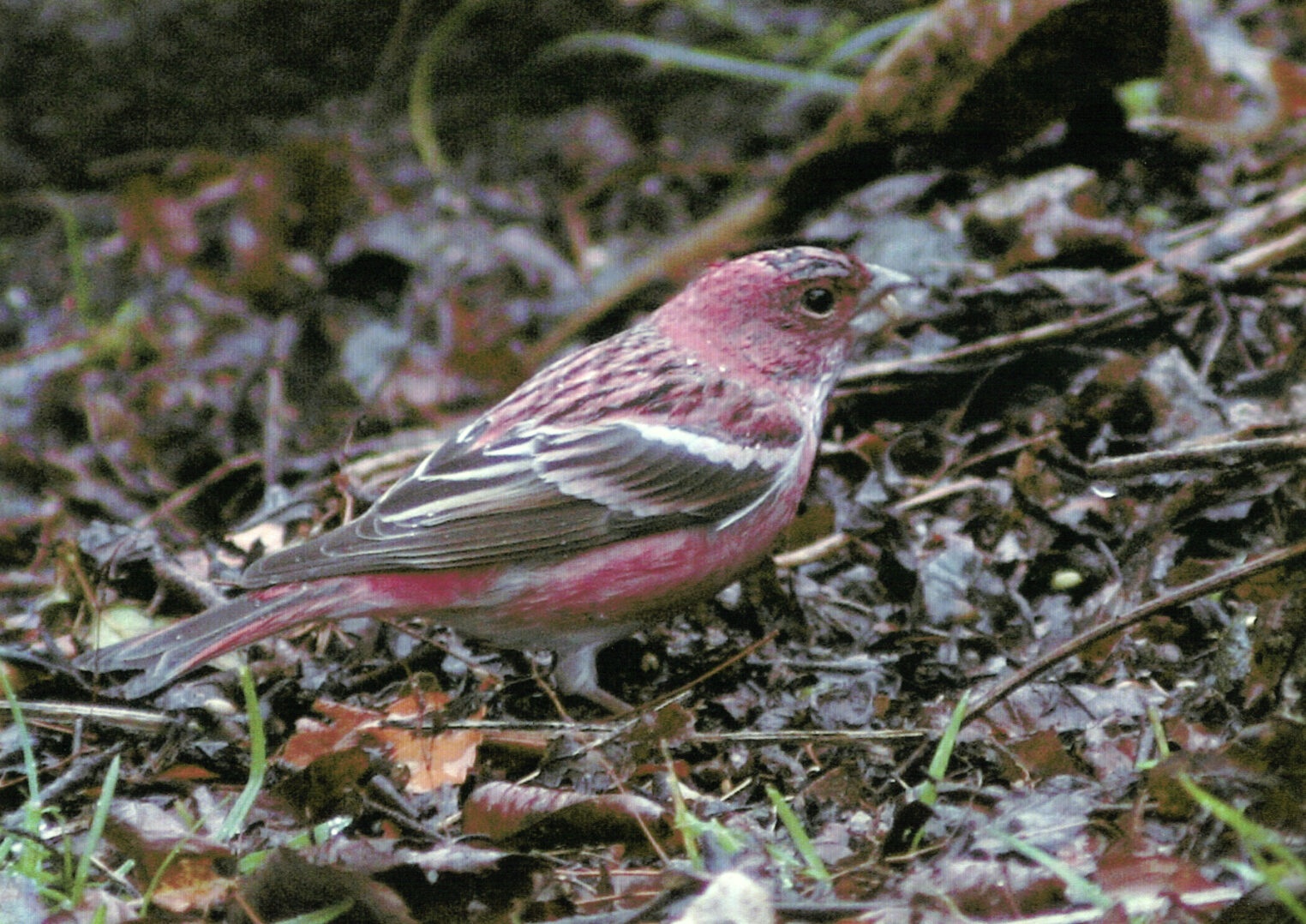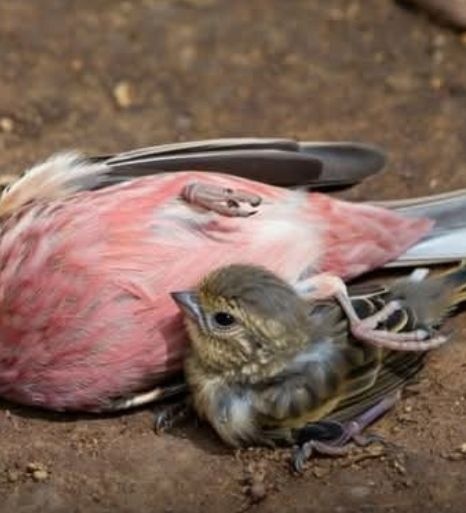When a Small Bird Stayed by Its Fallen Companion A Quiet Moment of Loyalty in the Wild

In human life, loss is often marked by ceremonies—candles lit in memory, flowers placed with care, or words spoken to bring comfort. These rituals help us process absence and find meaning. But in the natural world, there are no formal traditions, no speeches, and no explanations. Instead, there is only stillness.
Recently, observers witnessed a small bird remaining beside its fallen companion. The bird did not sing, fly away, or show signs of alarm. It simply stayed close, as though presence alone could bridge the gap between what once was and what now remained. The scene unfolded quietly, yet it carried a weight far greater than words.

For many, it raised a question: do animals understand loss in ways we rarely recognize? Perhaps birds do not interpret the end of life as humans do. Yet their actions often reflect something deeply familiar—loyalty, recognition, and the simple refusal to leave too soon. In that moment of stillness, the bird created its own kind of vigil, a silent ritual that needed no language.
Scientists and nature enthusiasts have long noted behaviors in the wild that mirror forms of mourning. From elephants lingering over their herd mates to dolphins supporting weakened companions, such gestures suggest that bonds in the animal kingdom run deeper than survival alone. The small bird’s vigil offers another glimpse into this quiet truth.

What makes the sight so striking is not only its tenderness but also its universality. It softens the boundary between human and animal hearts, reminding us that the experience of farewell is not unique to people. It exists across nature, expressed in ways that do not rely on rituals but on presence itself.
This gentle moment challenges us to reconsider how we view connection in the natural world. Sometimes love is not spoken, nor shown through ceremony. Sometimes it is revealed simply by choosing to remain, even when there is nothing left to do but stay.






